Without a doubt, it’s been another challenging growing season in northern Idaho. Cold weather in May and June saw overnight temperatures in the 40s; nowhere near ideal for warm-season tomatoes to get started.
Then July arrived on fire with its prolonged triple-digit temperatures. Again, not ideal growing conditions.
The extreme shifts in weather played havoc on many gardens – mine included. The results have been stressed plants, incomplete pollination, and delayed or diminished production.
If your garden is anything like mine, you’re seeing an abundance of green tomatoes hanging on the vines this year. Unfortunately, the clock is ticking on these fruits as our region’s first frost could arrive in some areas as early as September 15th!
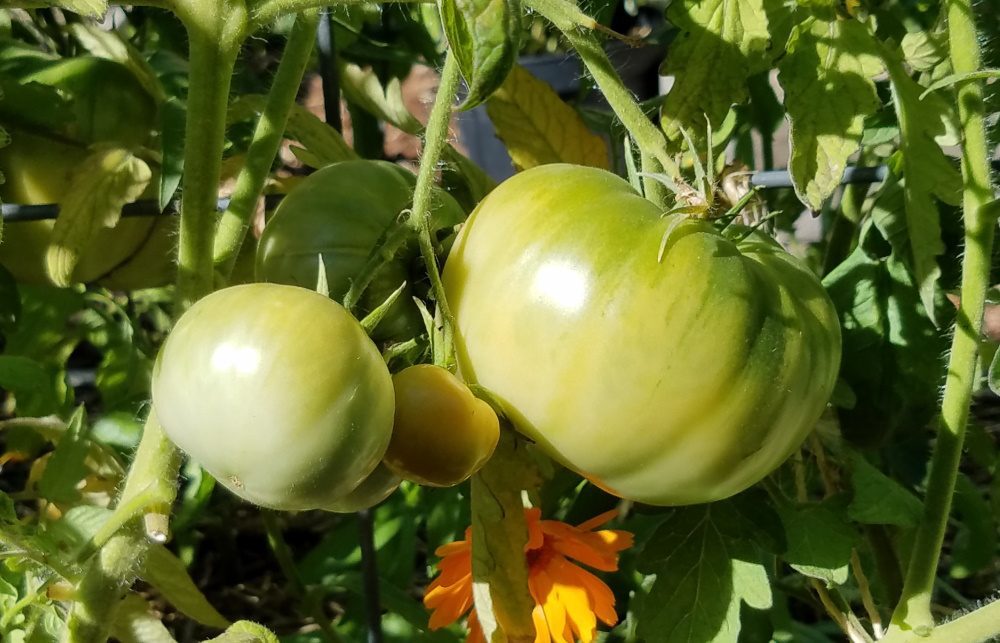
While I am keeping my fingers crossed for a long, warm fall, it’s time to get those tomatoes into ripening mode.
First, Why So Many Green Tomatoes?
Weather. A delayed start to the season, followed by extreme heat was a double-whammy on our plants. Many recovered with the moderate temperatures in August, resulting in a later fruit set and tomatoes developing much later in the growing season.
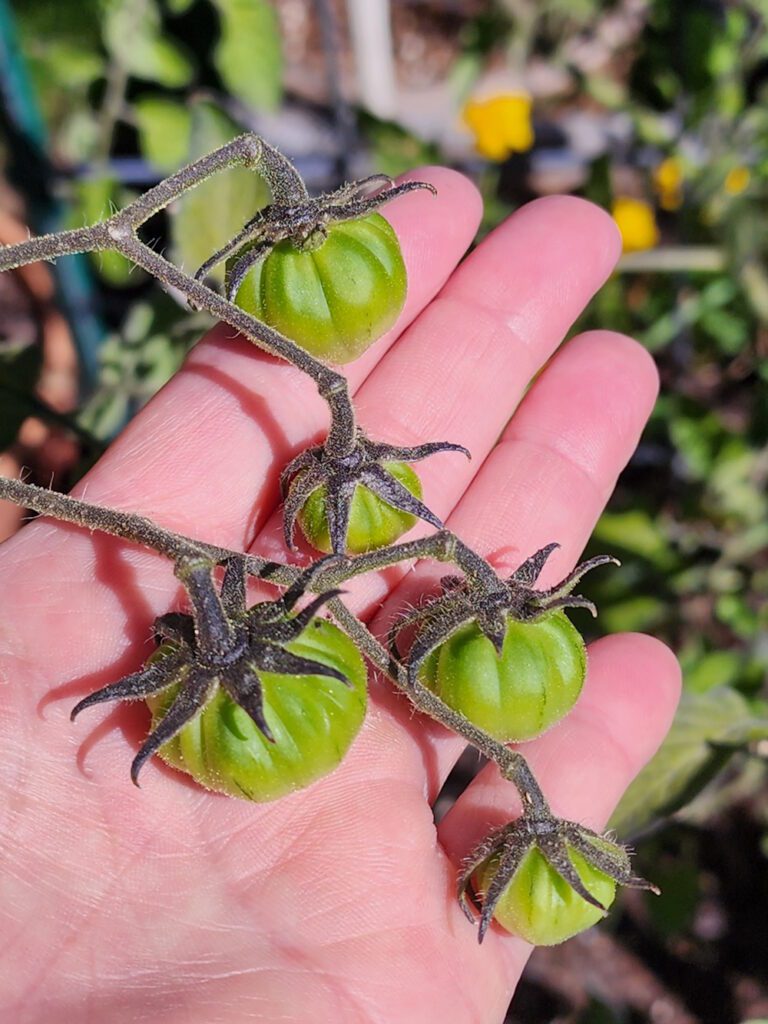
Depending on the tomato variety and the weather (of course), it takes six to eight weeks after pollination for the tomato fruit to reach full maturity; that’s when it has completed growing and can ripen. In tomato-talk, this is known as the mature green stage.
Ripening and color changes in tomatoes are triggered by temperature and the presence of ethylene, lycopene, and carotene within the fruit. Surprisingly, light does not play a role in tomato ripening.
The optimal temperature range for a tomato to ripen is 68⁰F to 77⁰F. The further the temperature moves in either direction, the slower the ripening process.
Furthermore, when temperatures are consistently over 85⁰F the production of lycopene and carotene, which gives tomatoes their color, stops. This causes the fruit to remain in the mature green stage or the breaker stage (when the fruit begins to show some color) until conditions become more favorable for ripening. Extreme heat can significantly slow down or even stop the ripening process.


Ripening On and Off the Vine
The goal of a tomato plant is to produce seed. Viable seed comes from ripe fruit. So, let’s help our plants achieve their goals and ripen those tomatoes. Here are a few things you can do to ensure that every tomato capable of ripening does just that.
Let it hang. If you can wait, mature green tomatoes will ripen on the vine as we move into the milder temperatures of late summer. Unless frost is imminent, allow these tomatoes to at least reach the breaker stage on the vine.
Harvest at breaker stage. I believe in harvesting tomatoes at the breaker stage – when they have started to show color but are not fully ripe. Tomatoes will continue to ripen off the vine in a warm location (68⁰F to 77⁰F) out of direct sunlight. Harvesting at this stage also prevents cracking from sudden rains or damage from birds and thirsty squirrels. Trust me, the fruit will taste just as good.
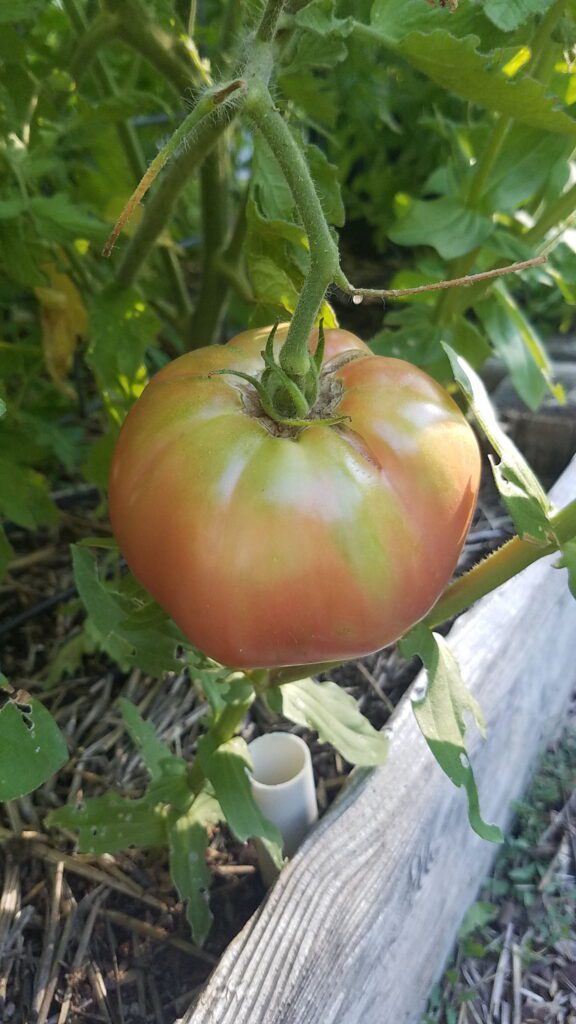
Top it. One of the first things you can do to encourage ripening is “top” the plant. This means pruning off about one-third of the top growth and removing blossoms or immature green fruit with no chance of ripening. Topping signals the plant to put its energy into ripening the remaining fruit on the vine.
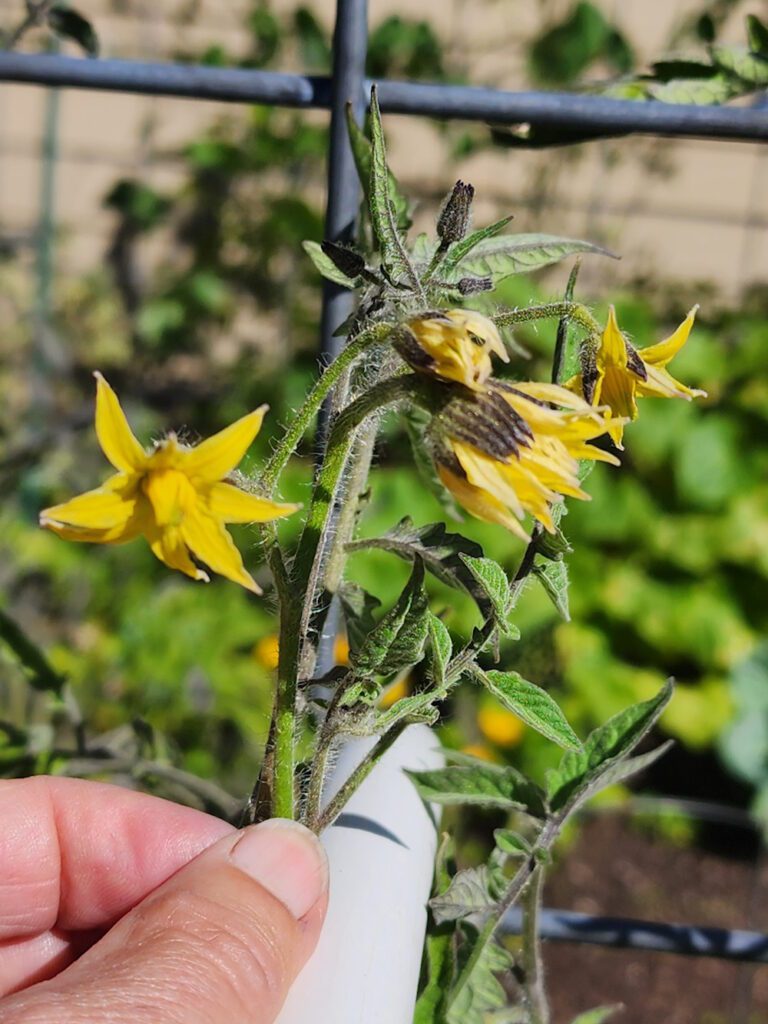
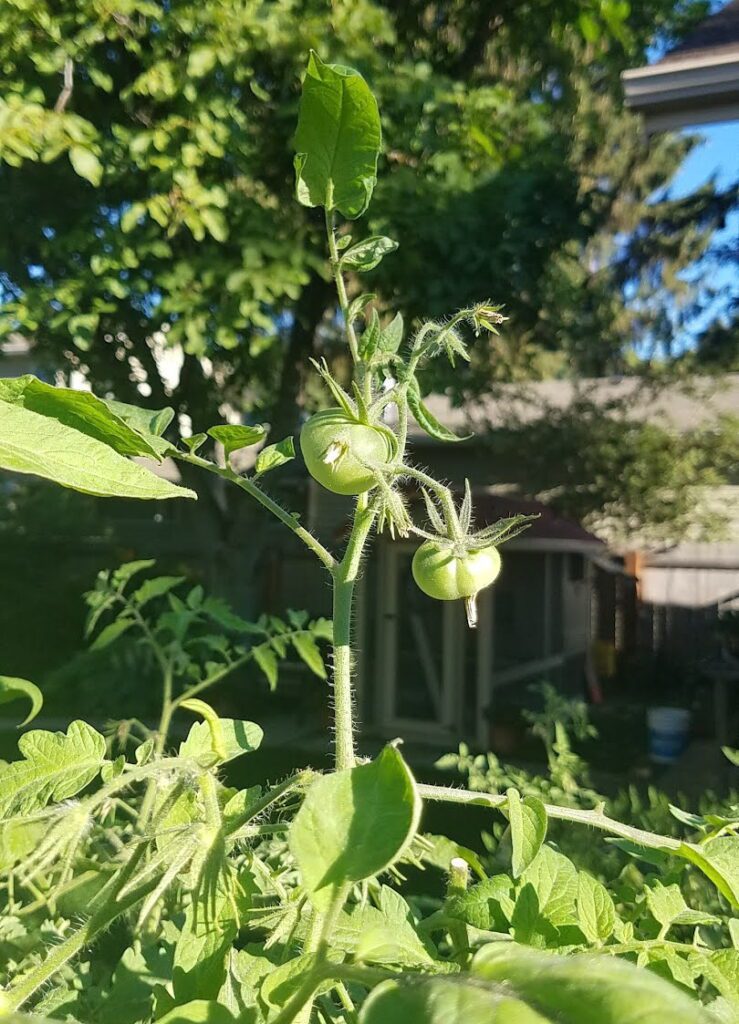
Cut back on water. Reducing water will cause stress to the plant, which again sends a signal to start ripening fruit.
Sever roots. This is a drastic measure for sure, but it is effective. Use a garden spade to cut straight down on just one side of the plant, cutting through the plant roots. This is a major stressor and should move ripening along.
When Jack Frost is knocking on your garden gate, I recommend picking all mature green and breaker-stage tomatoes and ripening them off the vine. Breaker-stage tomatoes usually ripen quickly on the counter since ethylene production is underway. Breaker tomatoes will ripen within a week, depending on the temperature and how much coloring the fruit has.
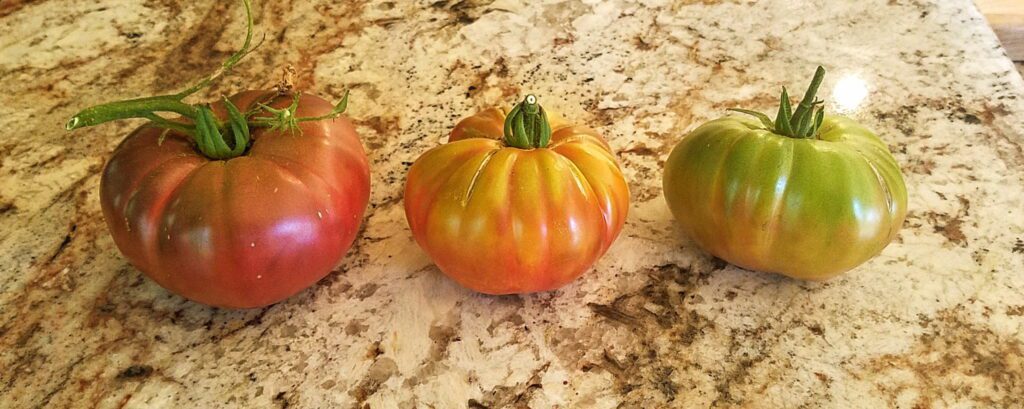
Mature green tomatoes that show no sign of coloring can be placed in a single layer in a breathable paper bag or cardboard box with a piece of apple peel or a ripe banana. These fruits emit a lot of ethylene gas and help speed the natural ripening process. Check progress daily and remove any spoiled fruit – including the banana or apple peel. It will generally take 7 to 14 days for green fruit to ripen.
As the summer winds down, it’s important to take action to ensure your green tomatoes have the best chance to ripen before the first frost arrives. Whether you let them ripen on the vine or bring them indoors, you can turn green fruits into juicy, delicious, ripe tomatoes – despite the challenging growing season we’ve experienced!



Hi Candace, your article on tomatoes in the breaker point stage was so helpful and definitely right at the critical time. I’m certain I’ll be able to most, if not all, my tomatoes after your great instructions.
You’re amazing!!
Thanks, Barb! I’m glad you found it helpful. 🙂 — Candace